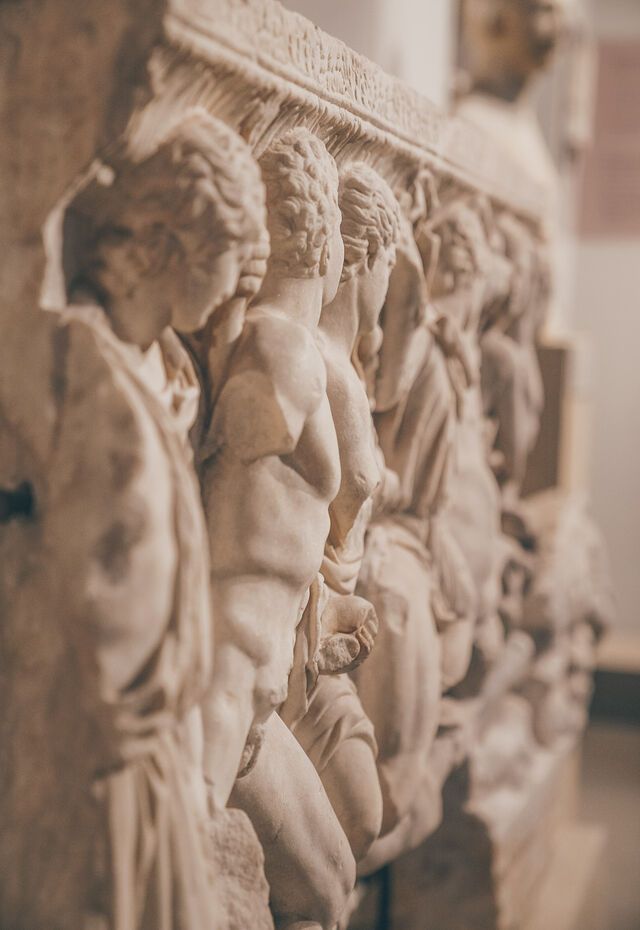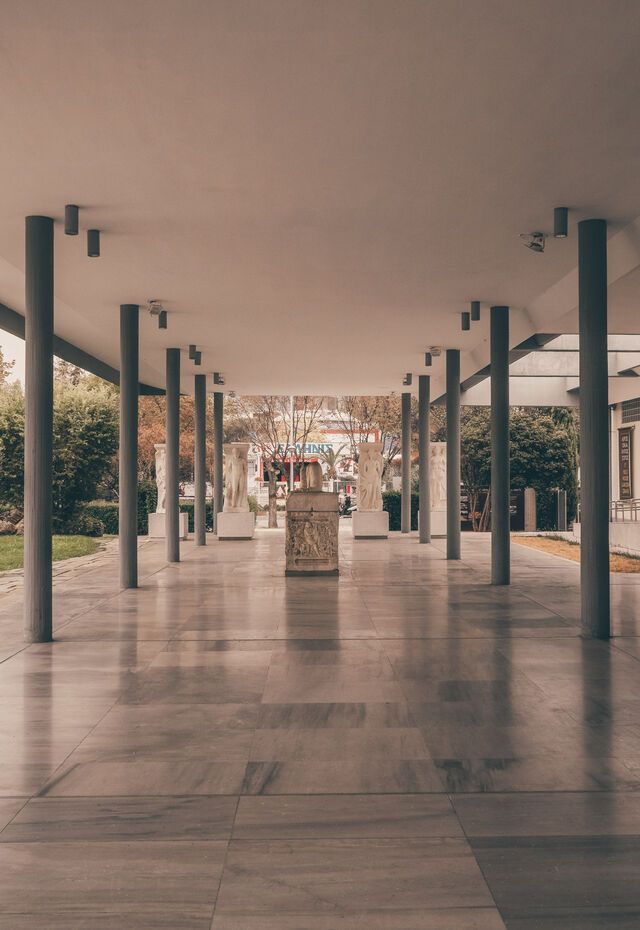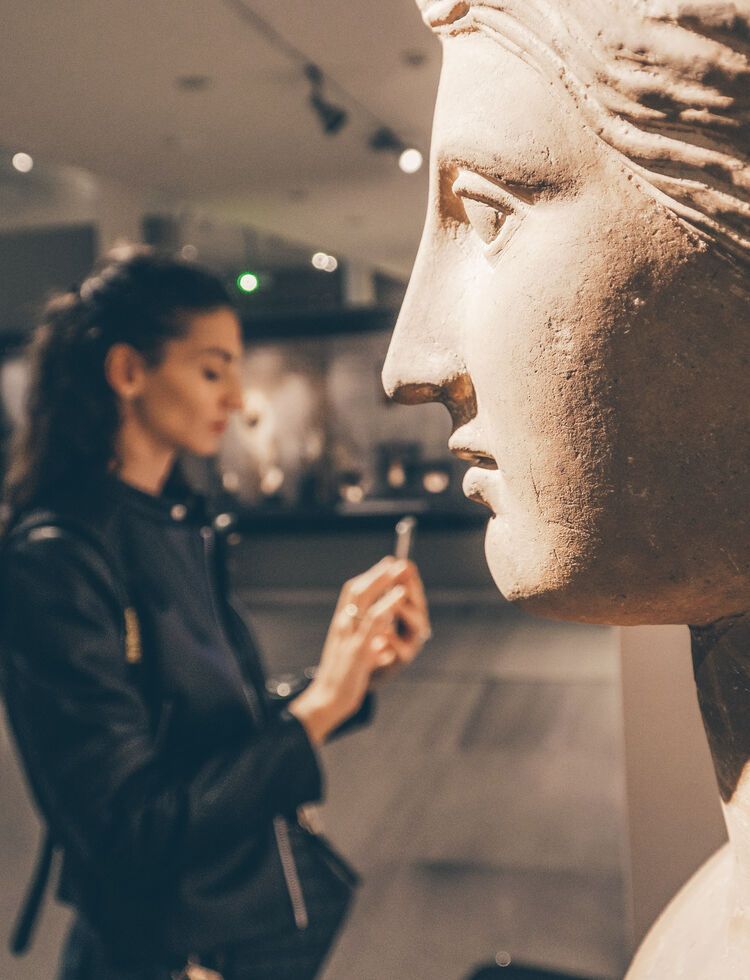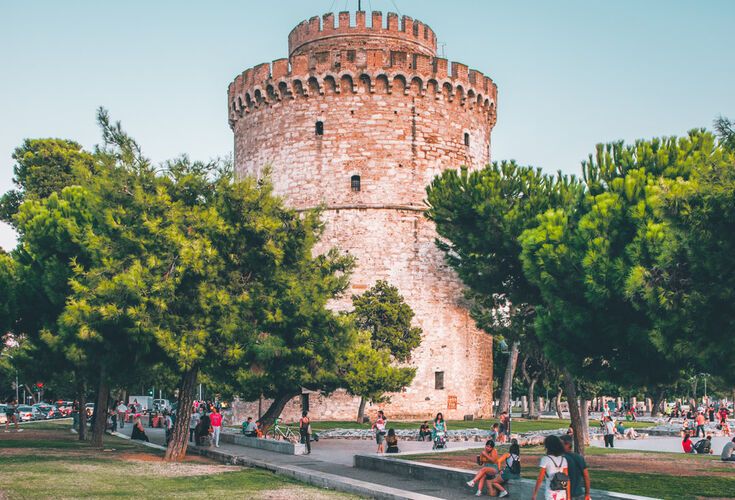The timeframe of history (or pre-history) within the museum is extraordinary. The permanent exhibitions alone will make you feel that no stone has been left unturned in telling the story of a fascinating part of the world.
Prehistoric Macedonia
Taking you to the time before modern humans, you are introduced to prehistoric Macedonia through exhibits such as the Petralona Skull, found in a cave in Halkidiki and believed to be more than 200,000 years old. Discover the Neolithic era and, through collections such as the astonishing Petralona Hoard of tools and weapons, the Bronze Age, showing how early humans hunted, fished, farmed, made tools, traded and became communities.
Towards the birth of cities
So often depicted as a time of darkness, the Iron Age (1100-700BC) is brought to light through the latest excavations revealing important changes in the economic and social life of settlements at the time. In this context, Macedonia is shown to belong to a wider network, exchanging goods and know-how, particularly in metalwork.
Macedonia from the 7th century BC until the late antiquity
From independent kingdom to province of the Roman Empire, this was the time when Macedonia flourished politically, socially and economically. Through hundreds of artefacts, you’ll learn about the institutions that defined the region’s history and how life was organised – the military, education, sports, farming, crafting, trading, and of course arts and religion. Highlights include the General conscription decree of King Philip V in 197 BC, calling on all males aged 15 to 50 to take up arms against the Romans. And the Marble door of the Macedonian Tomb of Agia Paraskevi, an elaborate burial monument showing the intricacy of Macedonian craftsmanship and burial customs of the elite.
Thessaloniki, Metropolis of Macedonia
Dedicated to the ancient city from its founding in 315 BC to the early 4th century AD. You’ll appreciate the origins of Thessaloniki’s modern grid system, including the organisation of ancient public and private life, and be introduced to some lesser-known monuments in the city. Highlights include the Statue of Augustus, the first Roman emperor (24 BC-14 AD) and the best-preserved statue in the museum, and the Small Arch of Galerius, originally crowning a small temple during the time of Gaius Galerius Valerius Maximianus, the Roman Caesar who gave Thessaloniki its palatial complex.
The Gold of Macedon
Metallurgy flourished in Macedonia not once but twice, in the late Archaic and early Classical times and later in Classical and early Hellenistic times. The craftsmanship is remarkable, particularly in the golden wreaths and the burial collections (weaponry, vessels and jewellery). Highlights are the Derveni Krater, a masterpiece of the 4th century BC, depicting the sacred wedding of Dionysus and Ariadne along with an entourage of satyrs and maenads. Also in this section is the Derveni Papyrus, from 340-320 BC, the oldest surviving book in Europe. It only survived because it is charred and is on the UNESCO Memory of the World register. The first part describes cult practices associated with the afterlife of the soul and the second contains an Orphic hymn.
Outdoor exhibits
Field, house, garden, grave
Artefacts from the 2nd-4th century AD, when Thessaloniki flourished, are displayed here, with sarcophagi and altars from the city's cemeteries. There is also a depiction of a wealthy house during the Roman Empire, including original mosaic floors, and reconstructions of a dining room, bedrooms, kitchen and reception area.
Memory in stone
Centring on the 1st to the 7th century AD, this section focuses on how stone was used in the communication of laws and edicts of kings and emperors, and shaped in the construction of temples, public buildings and of course the sculptures of heroes, gods and the busts of rulers and prominent citizens we admire today.




